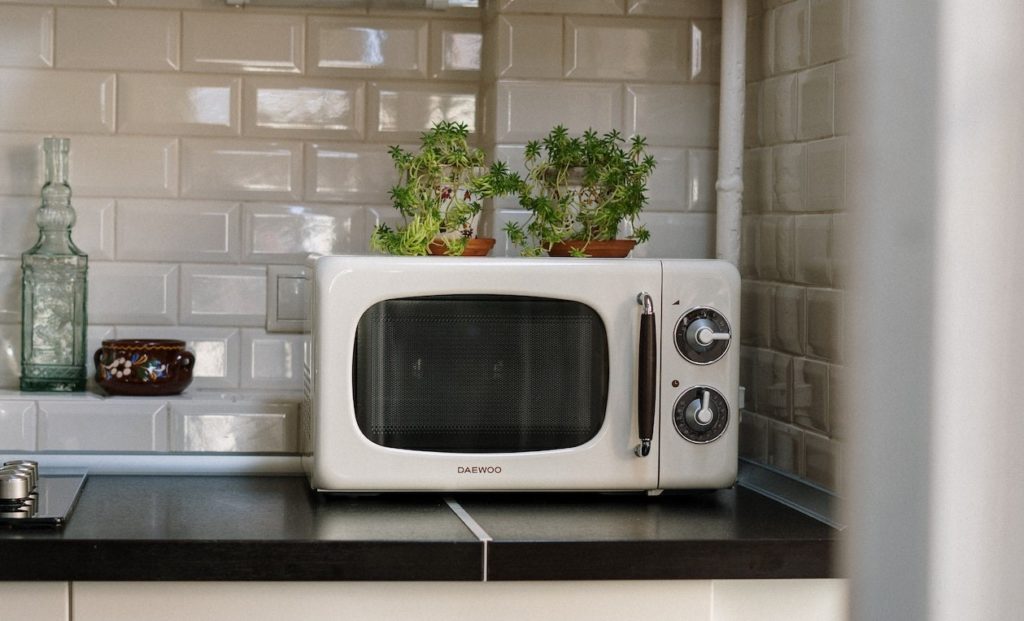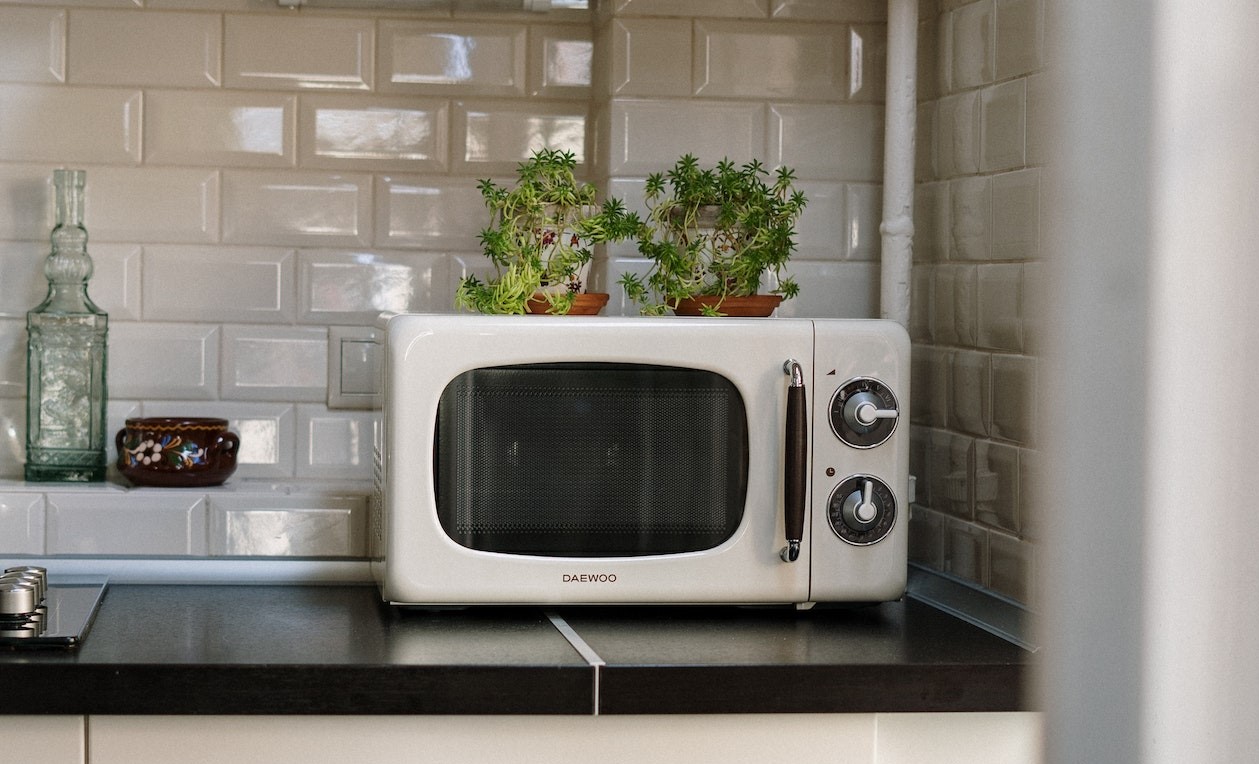
Why does metal spark in a microwave oven? The microwave charges one side of the metal positively and one side negatively. This charge can ionize the air, making sparks.
First, we need to look at what microwaves are. A microwave is a type of electromagnetic radiation. Electromagnetic radiation is energy that moves in waves and travel at the speed of light. They are different to mechanical waves because they don’t need a medium. Sound is a mechanical wave because sound travels by transferring energy from one molecule to another until the energy runs out. That is why sound cannot be transferred in space. Electromagnetic waves are simply energy. Their waves can have different wavelengths. Radio waves have the longest wavelength of any electromagnetic waves at 1 m and above. Gamma rays have the shortest wavelength at 0.01 nm. Microwaves have a wavelength of between 1 mm and 1 m. They have a frequency of between 300 GHz and 300 MHz because the shorter a wavelength is, the higher its frequency is. 1 GHz is 1 billion hertz, and 1 hertz is a single cycle of a wave in a second. So, the microwave with the shortest wavelength oscillates 300 billion times every second.
How does a microwave oven work? The process of cooking food in a microwave begins with the magnetron. This is the part of the microwave oven that produces the microwaves. A magnetron is a block of copper that has the center drilled out and cavities drilled around the center hole. A cathode (a rod of usually Barium Oxide) is placed in the hole in the center. The copper block is the anode and when a current is applied to the cathode, electrons fly off it and head for the anode, in the same way as with a battery. However, a magnet below the copper block produces a magnetic field that makes the electrons follow a curved path around the cathode. The electrons fly past the cavities and make them resonate, producing electromagnetic radiation as microwaves. The microwaves are funneled into the microwave oven through a waveguide.
Once the microwaves are in the oven, they whiz around at the speed of light, but they cannot escape. The inside of the microwave is lined with a stainless-steel mesh that reflects the microwaves back into the box. The microwaves cannot get out because the gaps between the steel mesh are much smaller than the wavelength of the microwaves, so the microwaves keep flying around the box, being reflected back in.
How do microwaves heat food? They create heat by making the water molecules in the food vibrate. Microwaves are electromagnetic radiation, which means they carry energy. All water molecules have a north and a south, a positive and a negative end. As the microwave passes through them, the water molecules are attracted and repelled, attracted and repelled, billions of times a second. That imparts a lot of thermal energy into them. That is also why liquids heat up faster than solids in a microwave. Interestingly, 2.5 GHz is the optimal frequency for heating water.
So, why does metal spark in a microwave oven? Well, actually, not all metal sparks in a microwave oven. It only sparks if there are rough edges. When metal is exposed to microwaves, the electrons in the surface of the metal get moved around in the same way as the water molecules do and in the same way they do in a magnet. If the metal is smooth, then that is the end of it. However, if the metal has a rough edge or jagged parts, a charge can build up. The microwave oscillates so one side of the jagged part is charged positively and one side is charged negatively. This is clear to see with the tines on a fork. When the charge has built to a high enough level, it sparks.
What causes a spark? When the electric charge builds up, it ionizes the air around it and makes it conductive. The electrons in the atoms in the air around the metal get extra energy. This gives them the energy they need to jump to a higher energy level and the extra energy makes them glow, which gives the spark its glow.
If the only thing in the microwave is a fork, it will spark, but that will probably be it. The microwave oscillates and the fork won’t build up a large enough charge to do anything else. However, if you put a lot of metal in the microwave, the sparks could burn the inside of the microwave oven or break the magnetron. They will also reflect the microwaves away and stop the food cooking properly.
So, why does metal spark in a microwave oven? Because a charge builds up on rough or jagged edges that is discharged into the air. A smooth metal object will not spark. And this is what I learned today.
Sources
https://en.wikipedia.org/wiki/Microwave
https://en.wikipedia.org/wiki/Microwave_oven
https://en.wikipedia.org/wiki/Cavity_magnetron
https://www.explainthatstuff.com/microwaveovens.html
https://www.livescience.com/why-metal-sparks-in-microwave.html
https://www.thenakedscientists.com/articles/questions/why-dont-microwaves-spark-themselves
https://science.nasa.gov/ems/02_anatomy
speedhttps://www.explainthatstuff.com/how-magnetrons-work.html


[…] stovetop pan. However, their popularity faded during the 1970s with the increasing availability of microwaves. These days, most households will probably have a pressure cooker because they can do things that […]
[…] that we can see is a very narrow band in the middle and it falls between ultraviolet, infrared and microwaves. We can see radiation with a wavelength between 380 nanometers and 700 […]